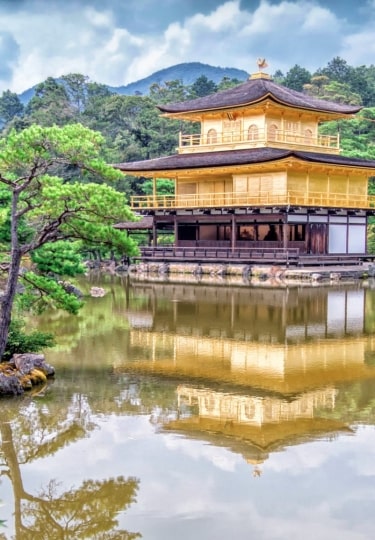What is Kyoto known for? Its deep roots and connection to its past, which are evident everywhere, from traditional tea ceremonies to the famous geisha culture of the Gion district.
This city is also packed with gorgeous gardens and divine seasonal landscapes, from spring’s cherry blossoms to autumn’s blazing red and orange maple trees.
Kyoto’s culinary landscapes, with delicious sushi, grilled fish, and soba, will delight your palate, while the city’s many spiritual connections to the natural world will satiate your heart and mind.
Delicious Food
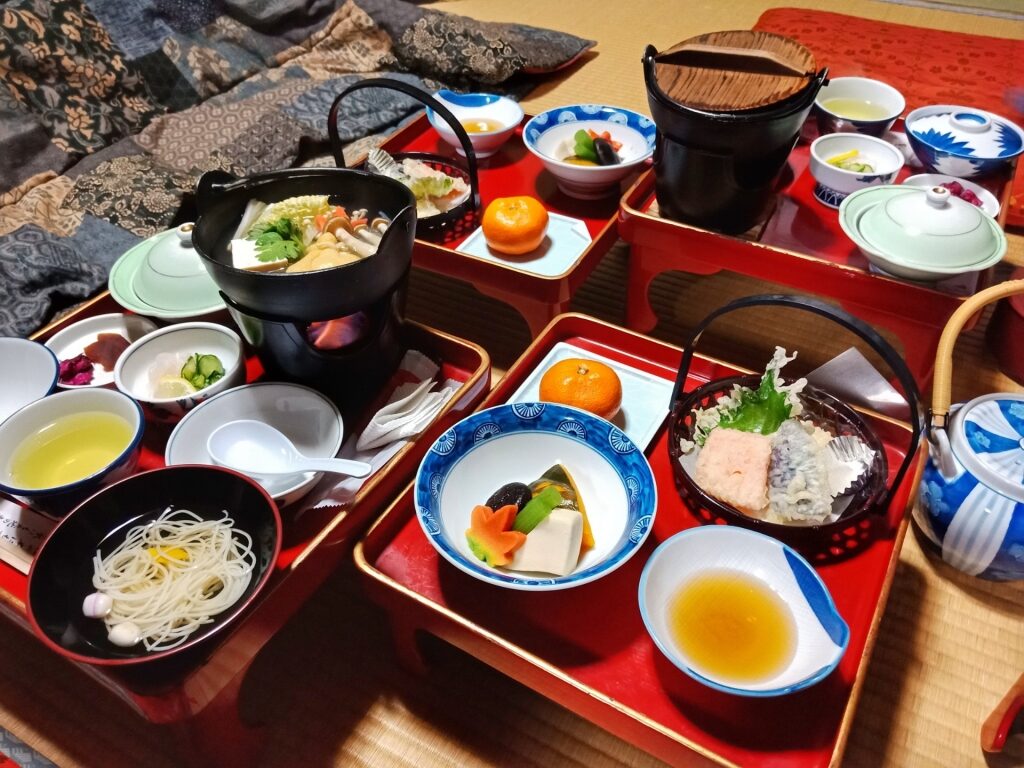
Shojin ryori
What is Kyoto famous for? Food, for one thing. This former capital city serves up a wide selection of delicious flavors to satisfy anybody’s culinary cravings.
Some of the best food in Kyoto includes ayu, or sweetfish—grilled to golden perfection—dished out in local eateries, and hamo conger eel, which is a regional specialty from local waters like the Seto Inland Sea, served sliced into small pieces.
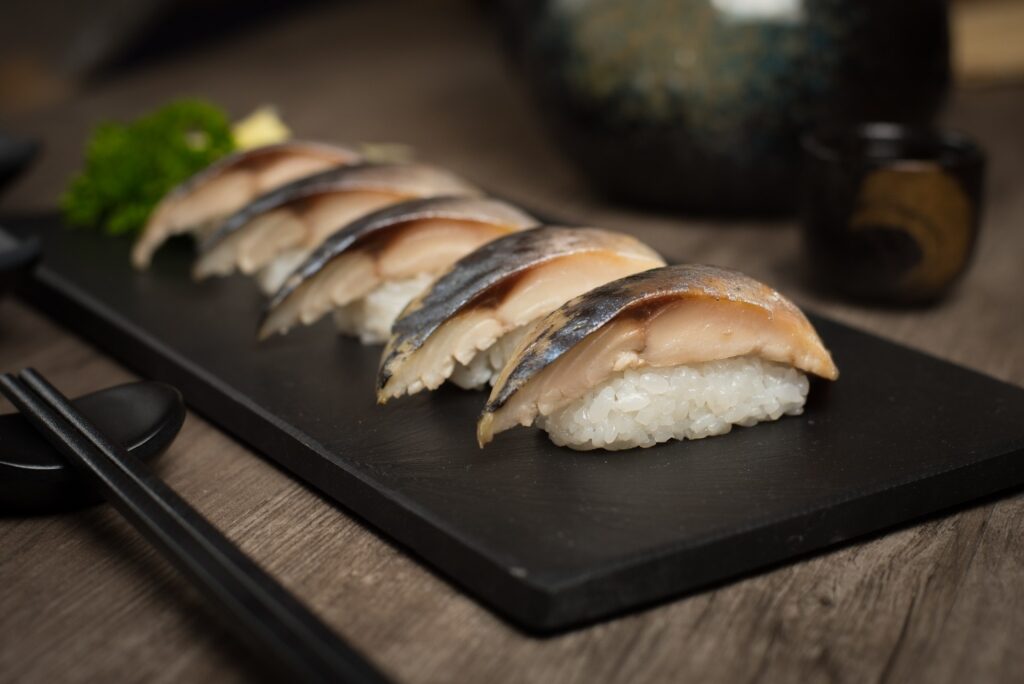
Saba sushi
Saba sushi, a pressed rather than rolled mackerel sushi, is a must-try gastronomic experience, as is Nishin soba buckwheat noodles, topped with flavorsome herring.
During your Kyoto stay, you can also try shojin ryori temple food, a vegetarian diet developed for Buddhist monks, featuring fresh, seasonal, harmony-oriented ingredients.
Another culinary experience to try is a kaiseki feast, with several courses prepared by a skilled chef using the best seasonal ingredients available, showcasing Kyoto’s obsession with refined flavors and Japanese food aesthetics.
Temples & Shrines
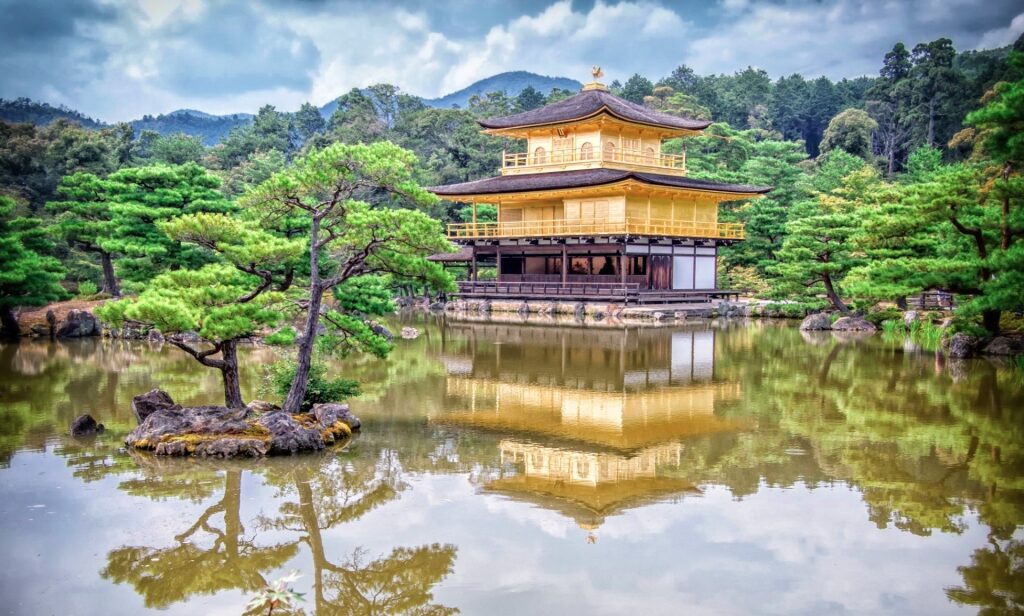
Kinkakuji
If you want to learn more about what Kyoto is famous for, visit some of this city’s holy sites, considered some of the most remarkable temples and shrines in all of Japan, blending history, architecture, and religious significance into a beautiful symphony of culture.
Kinkakuji, or the Golden Pavilion, is a Zen temple built in 1397. Its golden exterior is reflected in a tranquil pond, creating a powerful sense of mystical, if not downright ethereal wonder. The temple is surrounded by dense thickets of green trees.
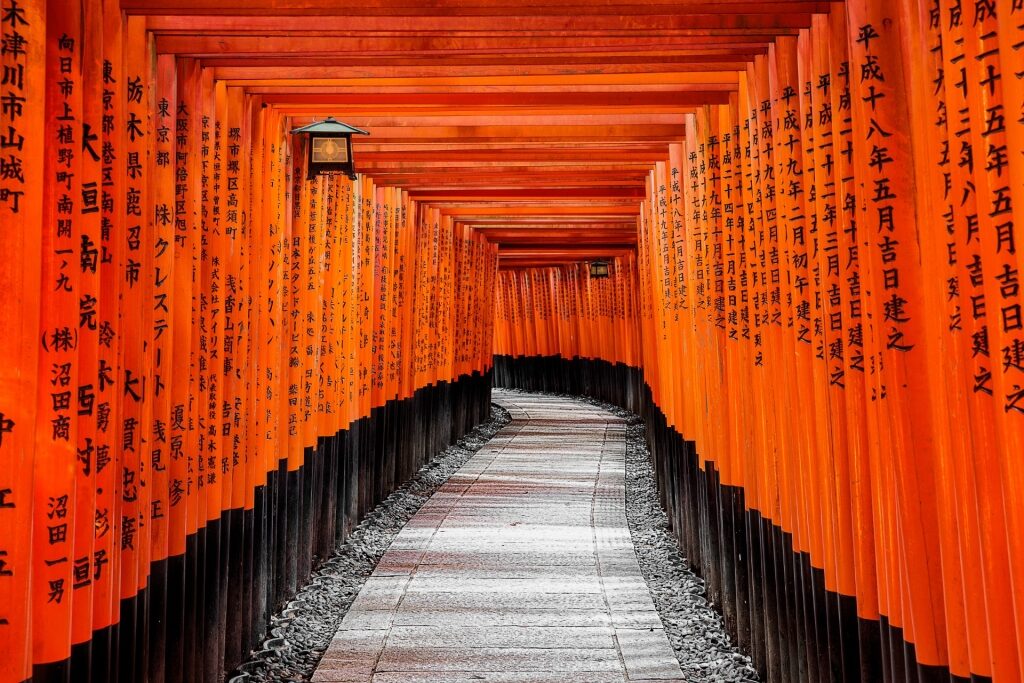
Fushimi Inari Shrine
Fushimi Inari Shrine, with its thousands of vermilion torii gates, all awash in dazzling red as they climb up the mountain, is a famous Shinto shrine that celebrates rice and wealth. The shrine, originally founded in 711, will also provide you with scenic hikes around Mount Inari, with spectacular views of Kyoto below.
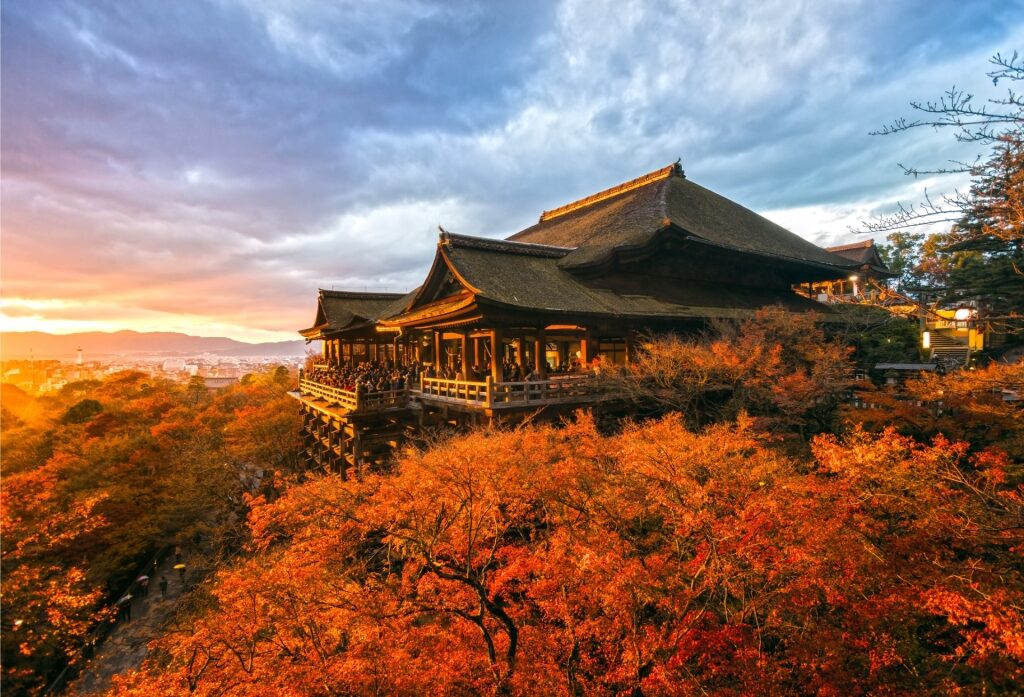
Kiyomizu-dera Temple
Kiyomizu-dera Temple is one of the most beautiful places in Japan. Standing on a hill in the eastern part of the city, the temple features more breathtaking vistas of Kyoto. This fetching Buddhist temple, surrounded by lush foliage, dates back to 778 and is well worth the hike to reach the temple. You can also see the three-channel Otowa Waterfall here, from which you can drink for long life, success, and romance.
Other sites worth visiting include Heian Shrine, with its massive bright red torii gate, as well as Yasaka Shrine, founded in 1350. This is now the center of the popular Gion Matsuri festival, with colorful floats and pageantry, held every July.
Garden Sanctuaries
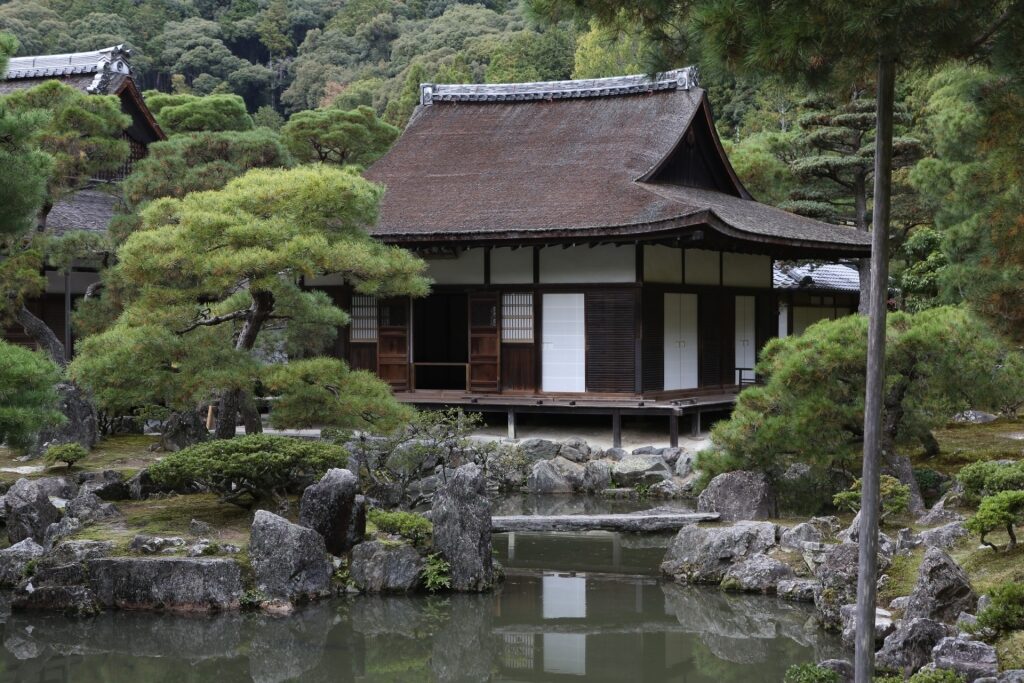
Ginkakuji
Some of Kyoto’s most celebrated gardens are connected to temples, which speaks to the close association of nature and religion in Japanese society. These garden sanctuaries will, hopefully, help you achieve a state of peaceful contemplation.
Visit Ginkakuji’s Zen botanical garden, home to the Silver Pavilion, where you’ll encounter paths flowing around a dry-sand garden, ponds, green moss, and other plants and trees neatly clustered together in an aesthetically pleasing manner.
If you call upon the 13th-century Nanzenji Temple, you’ll find beautifully tended gardens with meticulously ground gravel and carefully arranged rocks that represent simple living and tranquility. This site also features maples, pine trees, and cherry blossoms, which guarantee a riot of colors in the spring and autumn.
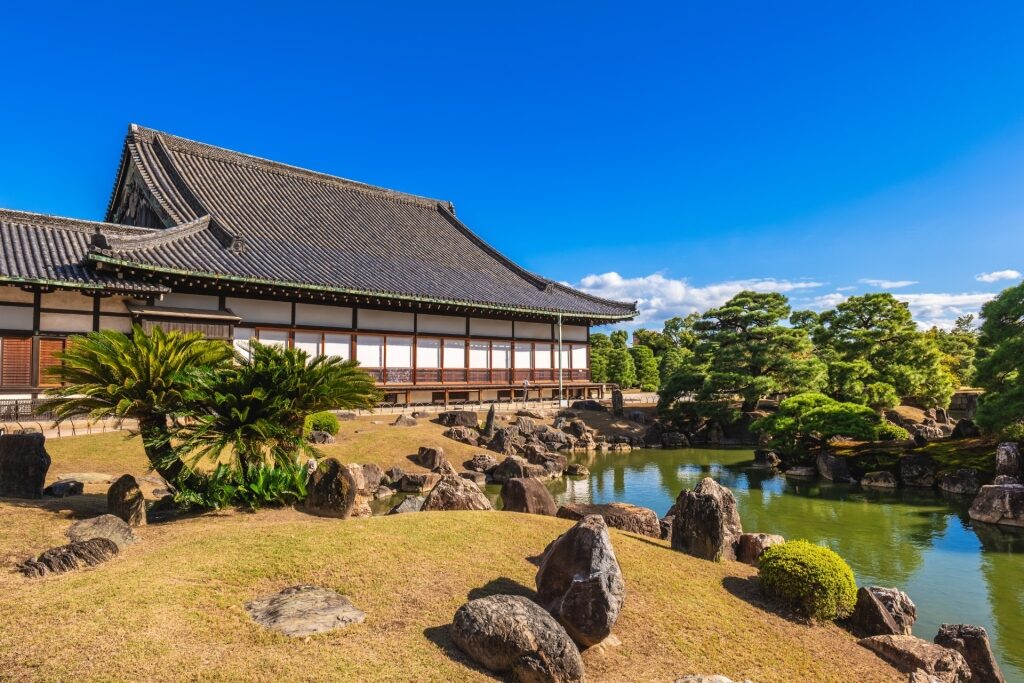
Ninomaru Garden
The Edo period Nijo Castle boasts some gorgeous gardens as well, including Ninomaru Garden, designed by renowned landscape designer Kobori Enshu. His creation here is the epitome of both landscape design and nature, with a charming pond with three little islands and a small waterfall, along with pine trees, plum trees, and cherry blossoms.
Visiting Kyoto Botanical Gardens is another one of the best things to do in Kyoto. Established in 1924, the garden will offer you an impressive collection of plant biodiversity. Meanwhile, Saihoji Temple’s moss gardens, known as the “Moss Temple,” will treat you to a delightfully verdant outdoor setting.
Museums
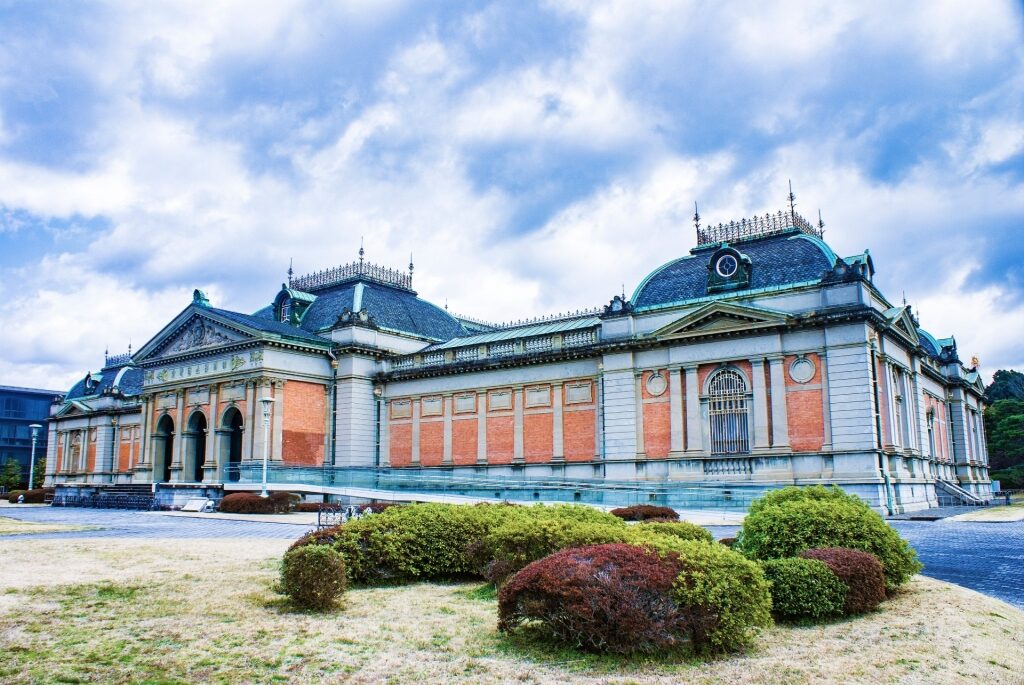
Kyoto National Museum
You’ll encounter a variety of museums in Kyoto offering thought-provoking glimpses into the city’s cultural life and past.
The Kyoto National Museum, founded in 1897, will present you with a trove of antiquities ranging from ceramics and calligraphy to beautiful textiles, many dating back a millennium or more. There are many pieces from the Heian period, along with important works from other parts of Asia.
The much smaller Ryozen Museum of History, established in 1970, focuses on a pivotal period in Japanese history: the Bakumatsu period, along with the Meiji Restoration, which both took place during the 1800s. Ryozen is home to fascinating artifacts and exhibitions detailing Japan’s transition from feudalism to modernity.
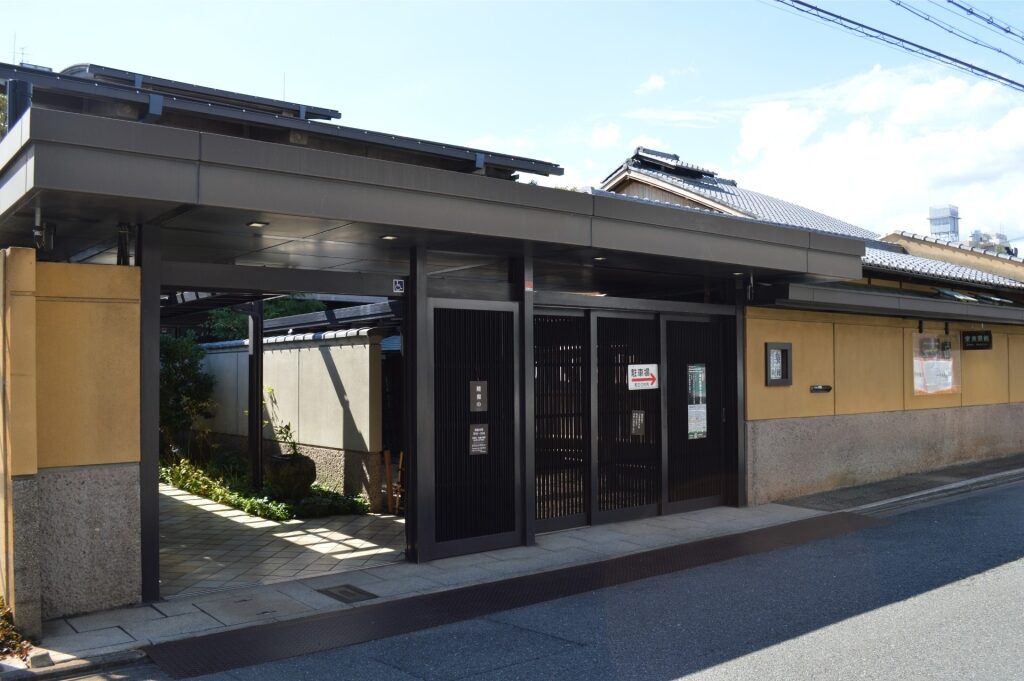
Raku Museum Photo by At by At on Wikimedia Commons, licensed under CC BY-SA 3.0
The Raku Museum is a sublime location where you will be able to learn more about the history of Kyoto’s hand-molded Raku pottery techniques. Its collection of textured tea ceremony objects is a testament to the deep relationship between this nation’s tea culture and the artistic life of this Japanese city.
For something more contemporary, visit the MoMAK, the National Museum of Modern Art, for some creative takes on Japanese modern art, including prints, ceramics, and more.
If you’re a train buff, another must-see destination is the Kyoto Railway Museum, which houses interactive exhibitions, as well as lots of full-size trains, new and old, which will teach you more about the history of Japan’s railways over the years.
Gion Geisha District
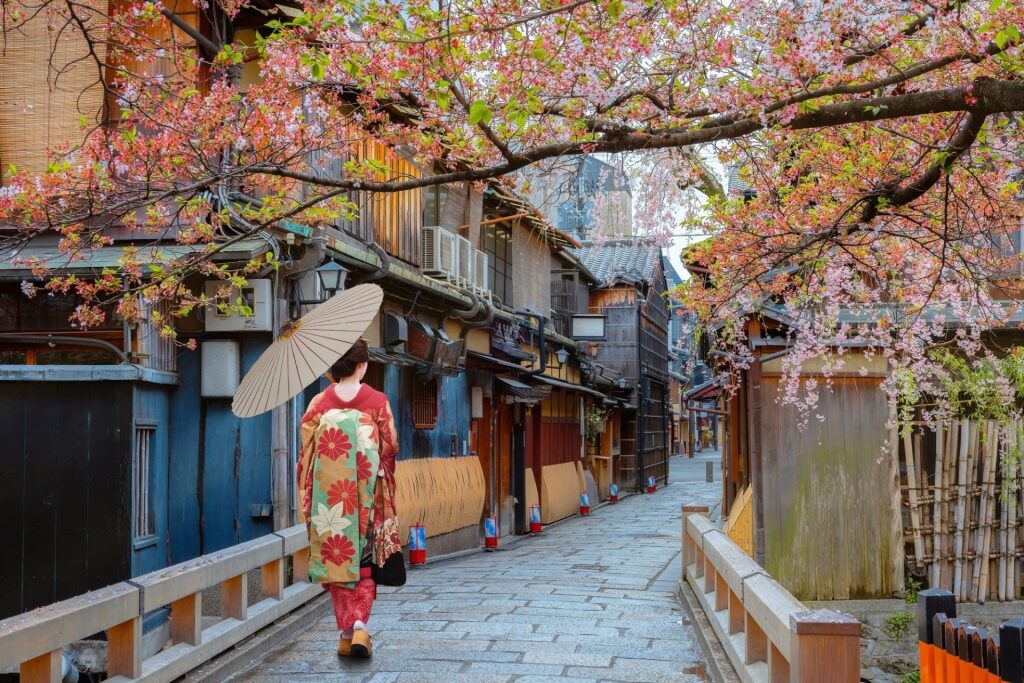
Gion Geisha District
A trip to Kyoto’s Gion Geisha District will make you feel as though you’ve stepped back in time, thanks to its narrow, cobbled streets and the traditional wooden machiya merchant homes, complete with wooden latticework, lining the streets and adding to the old-world feel.
Gion has also managed to preserve the music and dancing traditions of the geiko, Kyoto’s term for geisha, and maiko, or apprentice geisha, in the neighborhood’s teahouses.
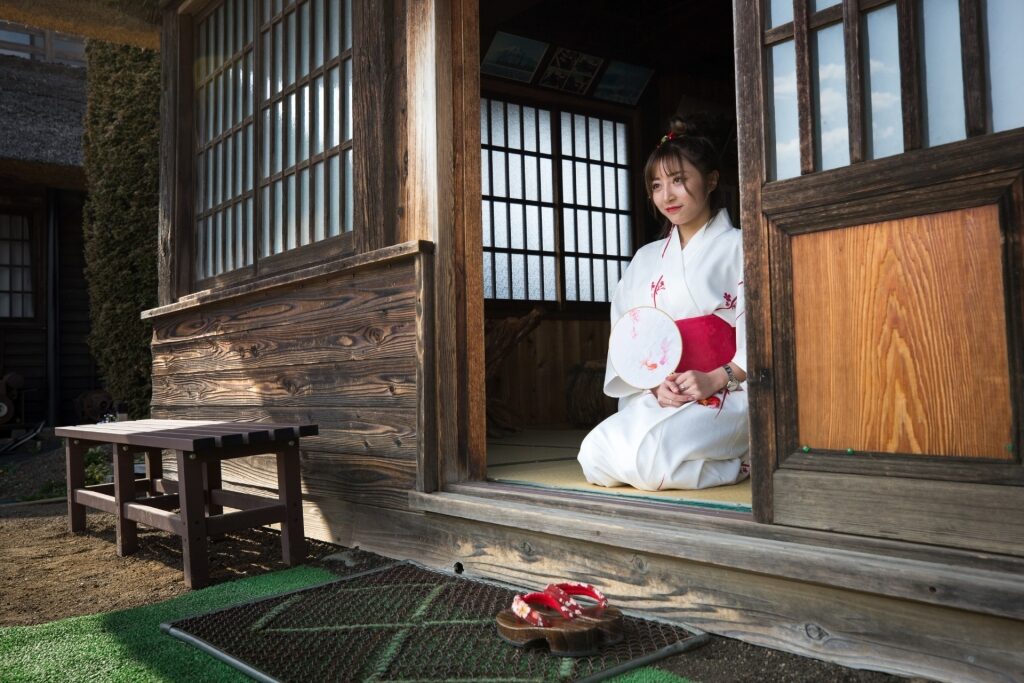
Geisha
Even if you only stroll around and never visit a traditional teahouse, also known as an ochaya, you will likely spot a few geishas and maiko performers. They will be adorned in silky kimonos, moving down the streets or past the willow-lined Shirakawa Canal as they travel from appointment to appointment at different ochayas.
Gion is a scenic neighborhood that’s fun to explore, providing you with some insight into Japan’s geisha-infused past.
The Philosopher’s Path
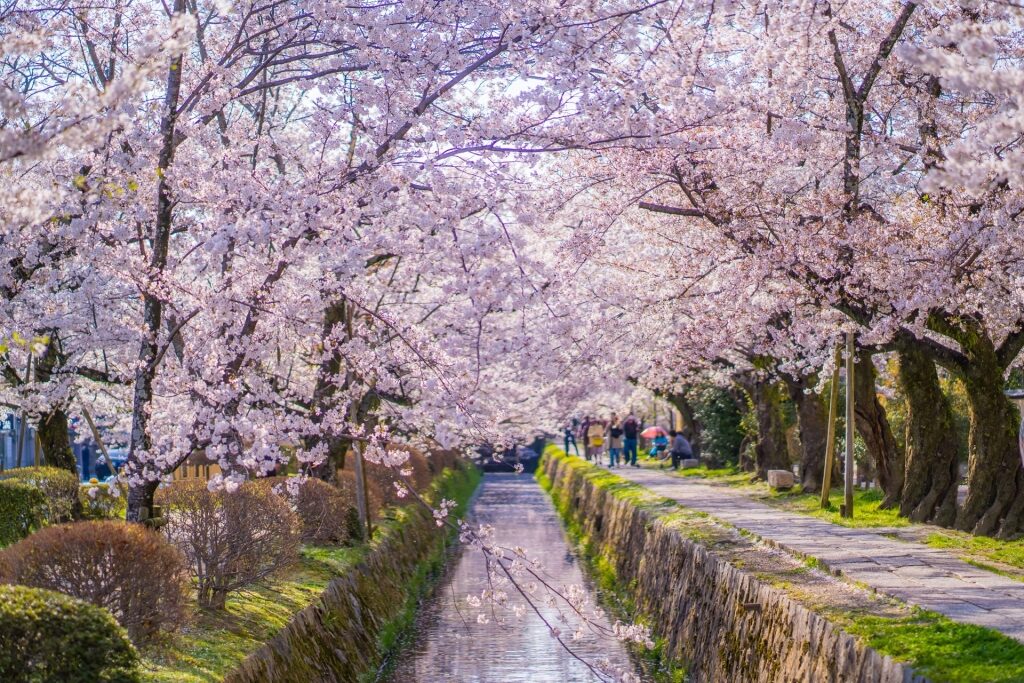
The Philosopher’s Path
The Philosopher’s Path takes you down a serene canal in Kyoto lined with cherry trees. This small but wonderful canal road is divinely pink in the spring with its cherry blossoms. And in autumn, the reddish-orange tones of the scarlet maple leaves brighten the scenery as well.
The path was named after Nishida Kitaro, a Japanese philosopher who used to stroll here while contemplating life. It’s easy to see why it’s such a popular destination for meditative walking, as the path is full of shrines, little cafés, and Japanese temples, including Ginkakuji.
If you’re exploring Kyoto, the Philosopher’s Path is a quiet refuge where you can take some time for a canal promenade that will help you draw inspiration from the area’s natural beauty.
Arashiyama Bamboo Grove
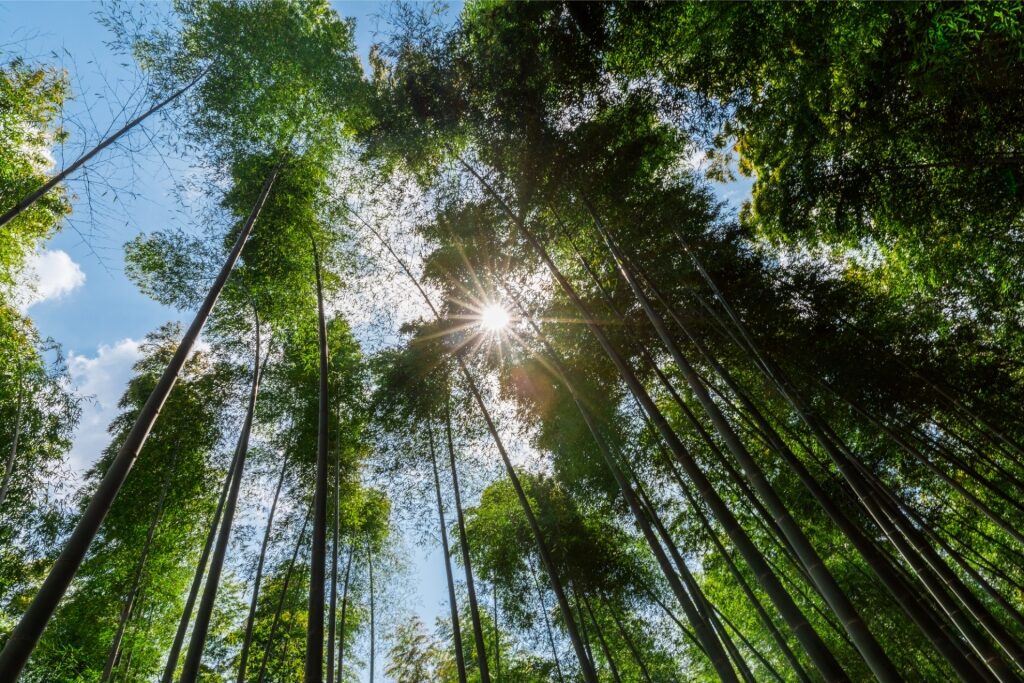
Arashiyama Bamboo Grove
A stroll through Arashiyama Bamboo Grove will offer you a transcendent walk among tall bamboo stalks, creating an otherworldly landscape.
This Japanese landmark, close to Rinzai Zen Tenryuji Temple, another exquisite site with ornamental gardens, will treat you to a visual feast, with light filtering through the dense bamboo forest, highlighting the natural greens.
The serene and ethereal wood—with creaking bamboo creating spellbinding natural music to accompany you during your walk—will, if your mind is in the right place, plunge you into a state of deep relaxation.
The bamboo forest is located in the idyllic Arashiyama area, close to the Katsura River and the wooden Togetsukyo Bridge. Arashiyama Bamboo Grove is one of the best places to visit in Japan if you’re a nature lover, a keen photographer, or merely seeking a serene place for reflection.
Kyoto Imperial Palace
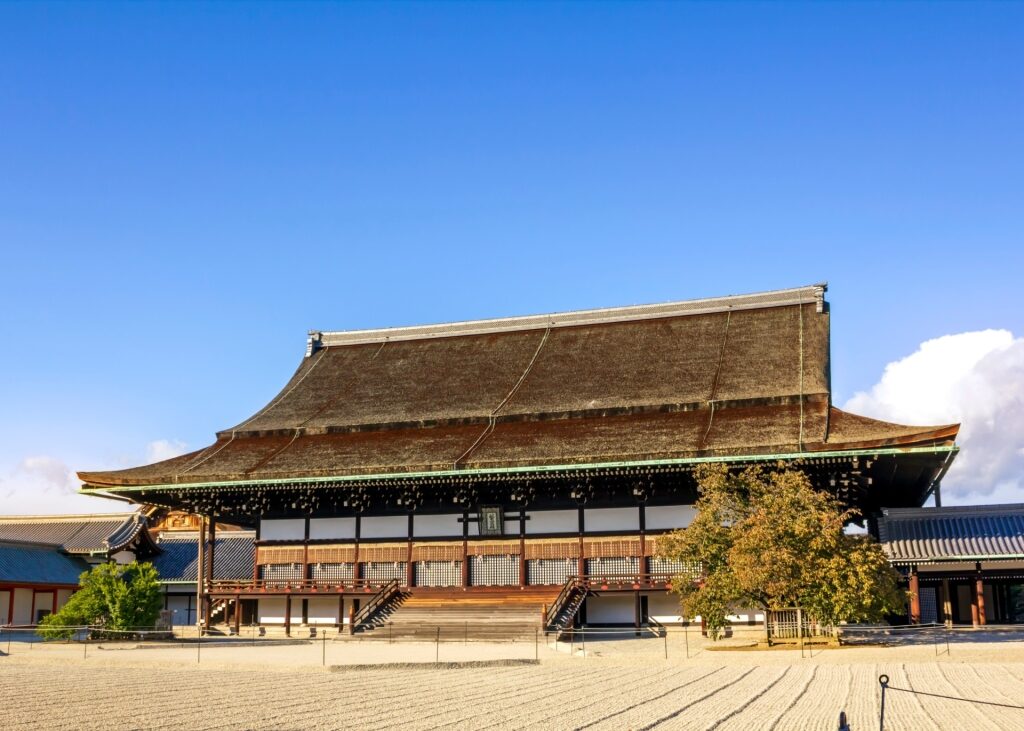
Kyoto Imperial Palace
Kyoto Imperial Palace will open up a window into Japan’s past. Kyoto was the nation’s capital until 1868 when the capital moved to the current title holder, Tokyo, which had previously gone by the name “Edo.”
The Imperial Palace is part of a large park surrounded by gardens and ponds. The trails through the palace grounds will take you back to the Heian times and the architectural styles of that era.
Walking around, you’ll see traditional buildings, graceful courtyards, and beautiful gates. This site’s Kyoto Gyoen National Garden will offer you plenty of scenic spaces to roam about as well, with the foliage here at its most colorful and vibrant during spring and fall in Japan.
As a note, you can only enter the palace proper on an official guided tour, which will offer you some fascinating takes concerning Japan’s imperial history and culture. Make sure you bring a valid I.D. if you’re interested in a tour—or better yet, book ahead. You can enter the gardens without a guide, though.
Kyoto Tower
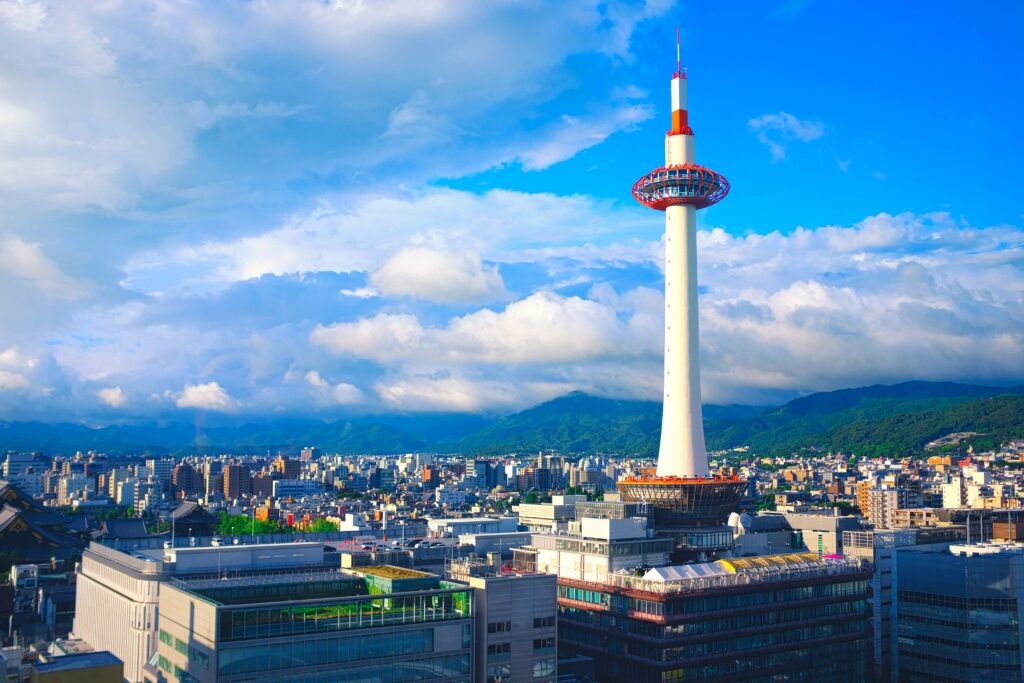
Kyoto Tower
If you want a bird’s-eye perspective of the city, where Kyoto’s temples overlap with the city’s modern neighborhoods, there’s no better place than the 430-ft Nidec Kyoto Tower.
This white tower with red highlights at the top, built in 1964 on the roof of a building that houses the Kyoto Tower Hotel, shops and restaurants, is the tallest structure in town.
You get amazing 360-degree views of sites like Kyoto Imperial Palace, or on clear days, as far as Osaka from the observation deck of Nidec Kyoto Tower, a dizzying 328 feet high.
Kyoto Tower, right outside Kyoto Station, is also a good place to get a general layout of the city. The futuristic shape of the tower makes it an interesting counterpoint to the more historical architecture and traditions that you will encounter elsewhere.
Mount Rokko Sightseeing
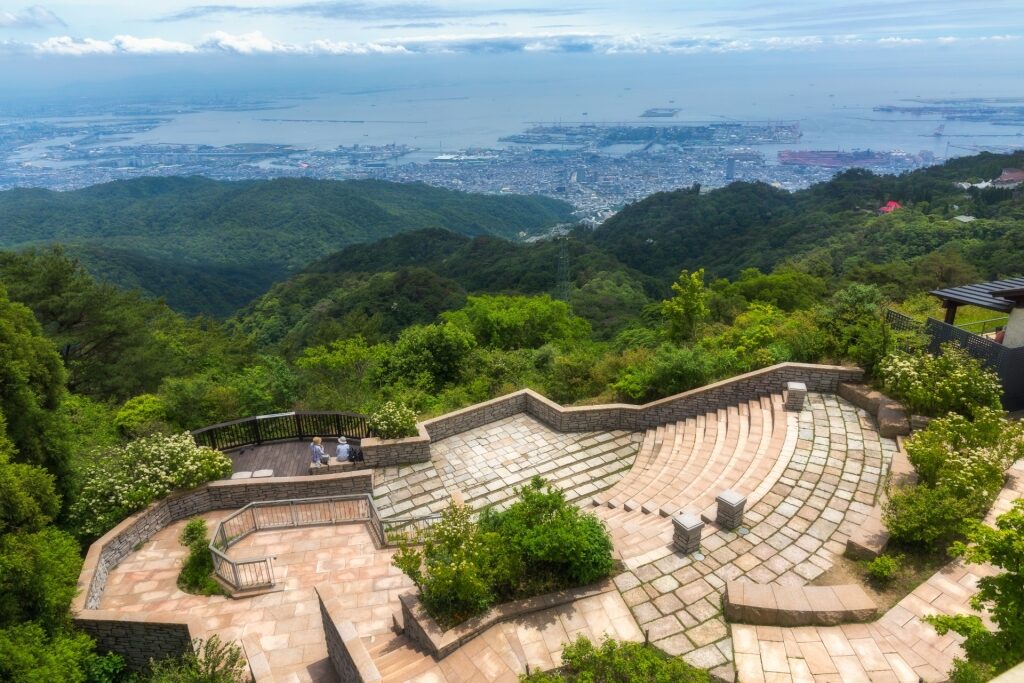
Mount Rokko
If you want to experience awe-inspiring panoramas in Kansai, a district on the main island of Honshu, of which Kyoto is the ancient capital, consider a tour of Mount Rokko, a wonderful destination that will let you reconnect with the natural world.
From Osaka, you can travel by train, car, or bus to Kobe, about 46 miles away, where you can then take the Rokko Cable Car up the mountain for a change of scenery.
After heading up the steep grade and accessing the summit by funicular cable car, which is a pleasant and easy way to the top, you’ll be greeted by magnificent vistas of Osaka Bay, Kobe, and weather permitting, Awaji Island in the Seto Inland Sea.
The tree-covered top is also a perfect spot to take some photos or simply sit outside and enjoy the scenic views.
After hiking around Mount Rokko, you can enjoy a stroll in the lush Rokko Alpine Botanical Garden, which specializes in alpine plants due to its cooler mountaintop climate.
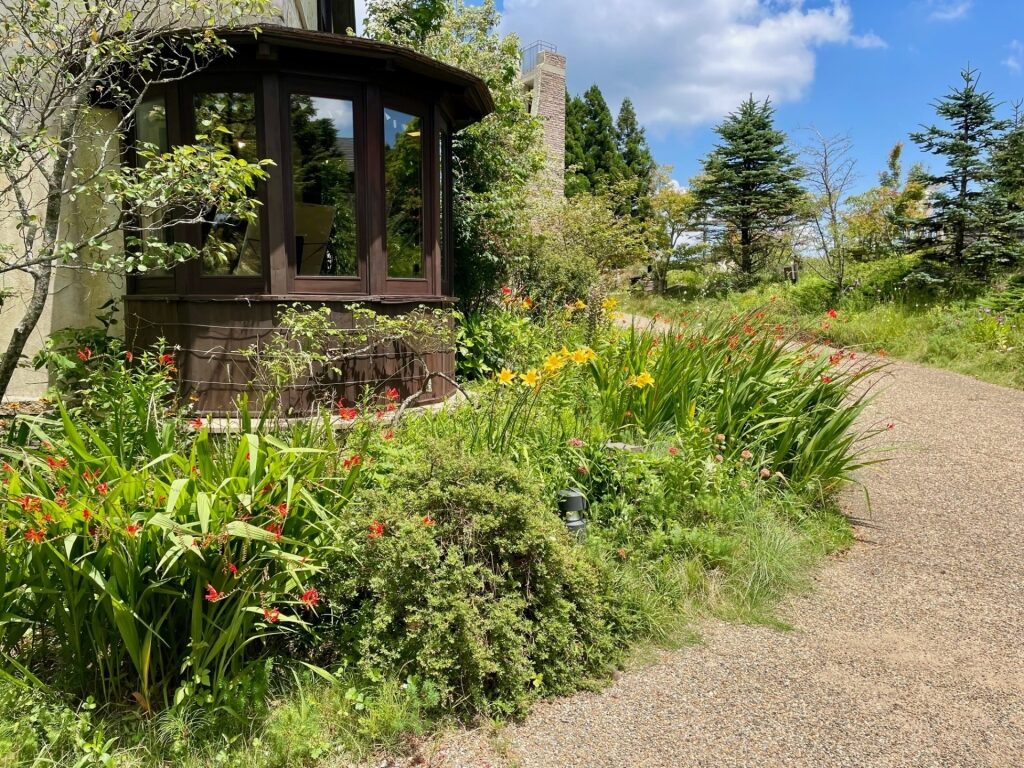
Rokko Garden Terrace
There are cafes and shops on the Rokko Garden Terrace for you to visit or peruse. The terrace is also home to the mountain’s treelike Rokko-Shidare Observatory.
Down the mountainside, you’ll come across Arima Onsen, one of Japan’s oldest hot spring villages where you can, if time permits, bathe in mineral waters following your mountain tour. Mount Rokko offers relaxation, wilderness, and culture, all of which make for a memorable day trip from Kyoto.
Read: Two Days in Kyoto
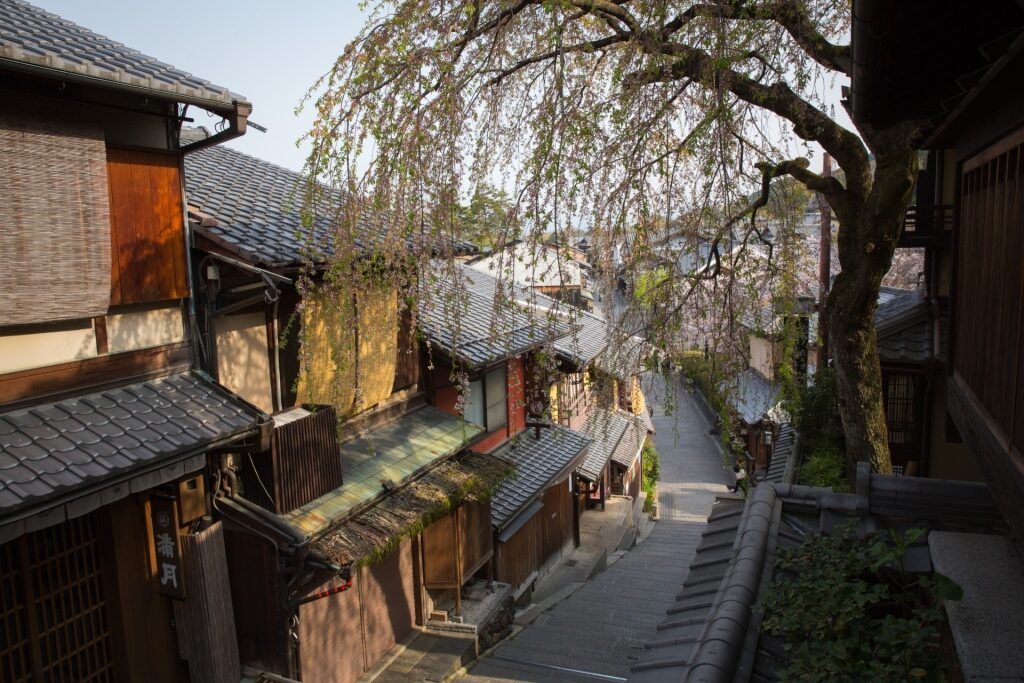
Kyoto
Discover Japan’s cultural sights on one of Celebrity’s cruises to Kyoto and discover everything that makes this part of Asia such a delight to explore.
